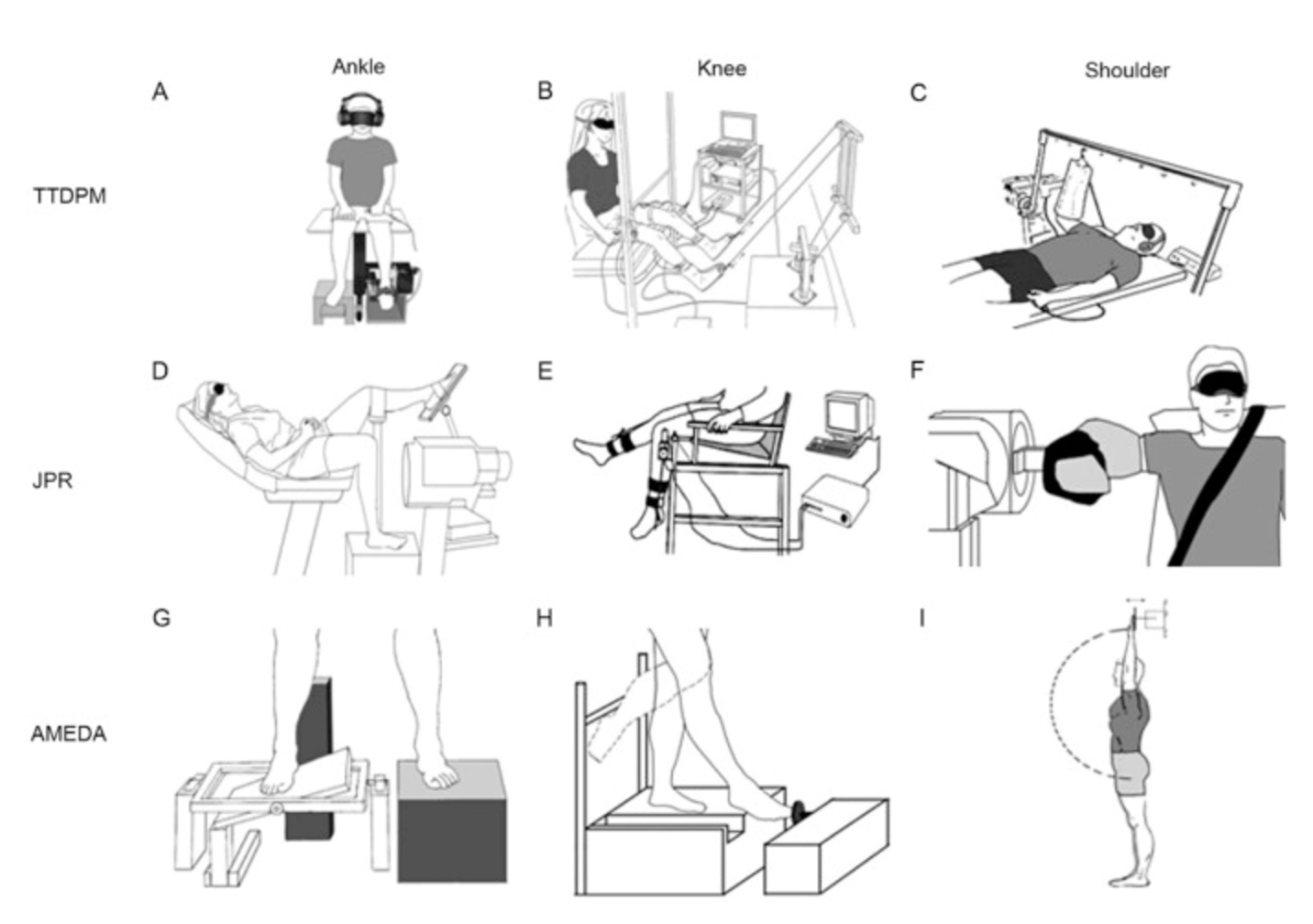Assessing for Proprioception
19 Feb 2017
So, the last two blogs have been about proprioception: How the brain changes after an injury to a joint… and therefore how we may need to increase training of joint / limb awareness; Ideas for proprioceptive retraining in dogs sans-visual feedback. Today, I just wanted to ‘round out’ my thoughts on this subject by discussing Assessment of Proprioception.
I found a review paper on the subject:
http://www.sciencedirect.com/science/article/pii/S2095254615000058
The article discussed three methods of testing for proprioception:
1) threshold to detection of passive motion (TTDPM)
2) joint position reproduction (JPR)
3) active movement extent discrimination assessment (AMEDA)

Essentially in TTDPM, the subject alerts the tester to precisely when he/she perceives movement in a joint which is being held and then slowly moved by an apparatus. With the JPR test the person must either move one limb / joint to match the preset contralateral limb / joint position. This test may also be done by having the tester move the subject’s limb / joint to a certain position, then repositioning limb and ask the participant to reproduce the position with either the same limb or the contralateral limb. Lastly, AMEDA would use an apparatus that could take a limb through various positions and label the different positions (i.e. 1, 2, 3, 4, 5). After learning the positions, the test would begin whereby the subject’s limb is put in a position, then he/she would need to label the position (1, 2, 3, 4, or 5), the limb would return to the start position and then testing would resume for the next positional test.
Fascinating stuff really! I read the paper with great interest, as it talked about the different techniques and how each was a validated test. I immediately concluded that there was no way we could utilize anything similar with dogs… and I though, “Ah well, back to the drawing board”. What made me decide to continue on with this topic as a blog was the final concluding statement: “To date, only a few studies have investigated associations between proprioception and sport performance, and proprioception and injury, and no empirical comparison between the three methods with regards to their predictive validity has been undertaken.”
What does that mean? It means that clinically, these tests have little value. They are research tests for the sake of research, but their relevance is low when it comes to real-world application. Why does that make me happy? Well, because we know that proprioceptive training DOES help with reduction in injuries in human athletes, and we know that it is imperative to return to sport after an injury. (And I don’t just mean, we know this clinically, I mean we do know this based on RESEARCH!)
So… how do we test for proprioception in animals? Functional abilities! Abilities to balance; walk over obstacles without tripping or knocking a bar; ability to back up onto and over different objects, etc. FUNCTIONAL TESTING! Therefore, if you are looking to test and retest proprioception, test functionally! Maybe time how long the dog can balance, count how many bars are knocked down in the cavaletti course, perhaps create a grading system that describes ‘wobbliness when balancing’. These sorts of assessments and tests are what can and could be studied and researched. Looking for a research project? I just handed you a good one!
Give me something I can USE!!!!
In the meantime, go with function, my friends!
Until next time… Cheers!
Laurie

